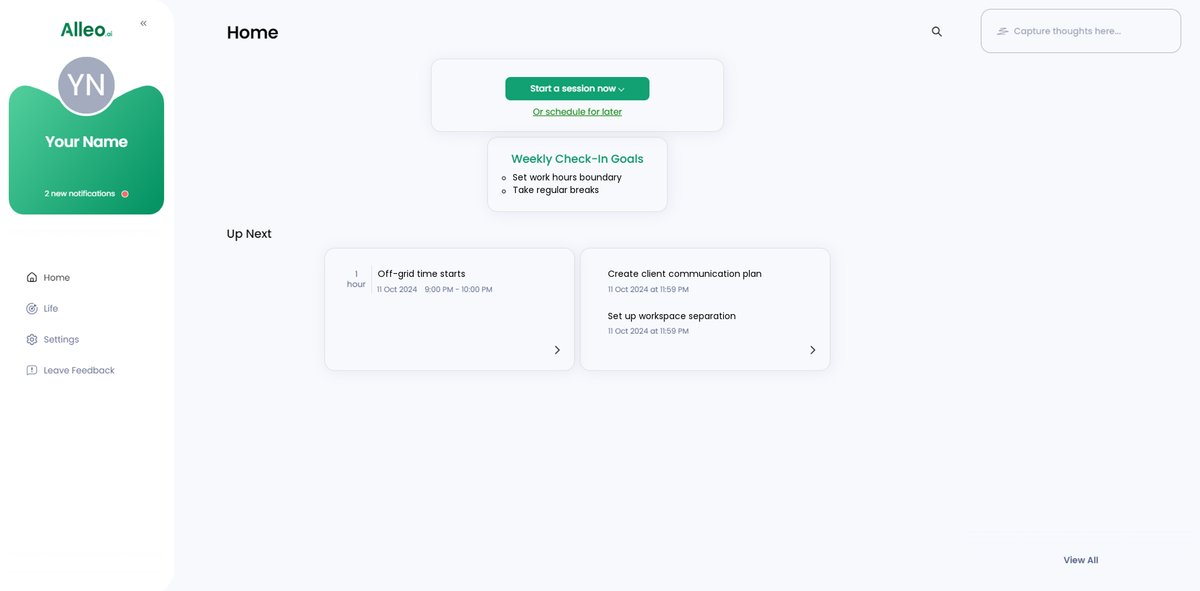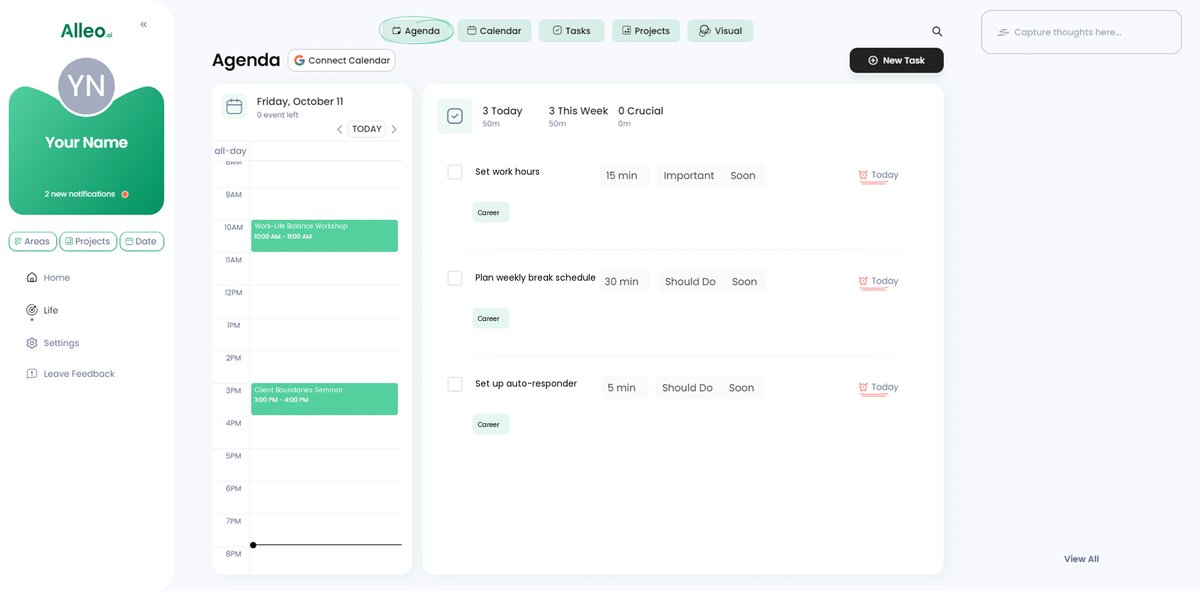Transform Your Practice: 3 Powerful Strategies for Therapists to Improve Work-Life Balance with Clients
Have you ever felt overwhelmed by client demands, leaving you with little time for your personal well-being? This is a common challenge when it comes to work-life balance for therapists.
As a life coach, I’ve guided many mental health professionals through these challenges. I’ve seen firsthand the struggle to balance work and personal life, especially when it comes to setting boundaries with therapy clients.
In this article, you’ll discover specific strategies to improve work-life balance for therapists. We’ll explore setting clear boundaries, taking breaks, and using compartmentalization techniques. These self-care techniques for mental health professionals can help in preventing burnout in therapy practice.
Stay with me. Let’s dive into these stress reduction tips for counselors and scheduling strategies for therapists.
Understanding the Struggles of Work-Life Balance for Therapists
Balancing professional boundaries while managing client communication is a common challenge for therapists. Many mental health professionals find that poor work-life balance impacts their personal health, job satisfaction, and client relationships. Effective time management for therapists is crucial in maintaining this balance.
In my experience, therapists often find themselves checking emails late at night or feeling obligated to respond to clients outside of work hours. This constant connectivity can lead to burnout and reduced effectiveness as a counselor. Implementing stress reduction techniques for counselors and setting boundaries with therapy clients are essential self-care techniques for mental health professionals.
Several clients report feeling overwhelmed by the demands of their job, which spills over into their personal lives. It’s crucial to address this issue to maintain a healthy and productive professional life. Prioritizing personal life as a therapist and focusing on work-life integration for mental health workers can help prevent burnout in therapy practice.

A Roadmap to Achieving Work-Life Balance for Therapists
Overcoming this challenge requires a few key steps. Here are the main areas to focus on to make progress in achieving work-life balance for therapists.
- Set clear On-Call vs. Off-Grid time boundaries: Define specific work hours and use technology to enforce them, essential for time management for therapists.
- Implement brief breaks between client sessions: Schedule 5-10 minute breaks to recharge, a crucial self-care technique for mental health professionals.
- Use compartmentalization techniques for work-life: Separate work tasks from personal time to maintain clear mental boundaries, helping in setting boundaries with therapy clients.
Let’s dive into these strategies for preventing burnout in therapy practice!
1: Set clear On-Call vs. Off-Grid time boundaries
Setting clear On-Call vs. Off-Grid time boundaries is crucial for maintaining work-life balance for therapists and preventing burnout in therapy practice.
Actionable Steps:
- Define specific work hours: Establish and communicate your available hours to clients, ensuring they understand when you are “On-Call” and when you are “Off-Grid”. This is key for setting boundaries with therapy clients.
- Use technology to enforce boundaries: Utilize scheduling apps or email auto-responders to manage client expectations and prevent work encroachment during personal time. This aids in time management for therapists.
- Create a physical separation: Designate a specific workspace that you leave when “Off-Grid” to mentally and physically distinguish between work and personal time, supporting work-life integration for mental health workers.
Explanation:
These steps matter because they help you maintain professional boundaries, which is essential for your well-being and effectiveness as a coach. By defining work hours and using technology, you can manage client expectations better and improve client caseload management.
Creating a physical separation between work and personal space reinforces these boundaries. According to Michelle Mace Curran, setting boundaries is crucial for preventing burnout.
Key benefits of setting clear boundaries:
- Improved mental health and reduced stress, supporting self-care techniques for mental health professionals
- Enhanced productivity during work hours
- Increased satisfaction in personal life, aiding in prioritizing personal life as a therapist
Implementing these strategies can help you achieve a healthier and more productive work-life balance for therapists.

2: Implement brief breaks between client sessions
Taking brief breaks between client sessions is vital for maintaining focus and preventing burnout, which is crucial for work-life balance for therapists.
Actionable Steps:
- Schedule 5-10 minute breaks: Plan short breaks between each client session to recharge. Use this time for stretching, hydrating, or practicing mindfulness, essential for stress reduction for counselors.
- Utilize relaxation techniques: Engage in quick relaxation exercises, such as deep breathing or progressive muscle relaxation, to reduce stress and maintain focus. These self-care techniques for mental health professionals are crucial for preventing burnout in therapy practice.
- Plan mini-breaks strategically: Align your break times with natural transitions in your day, like after a morning session block or before a heavy afternoon, ensuring consistent downtime. This is an effective scheduling strategy for therapists.
Explanation:
These steps matter because they help you stay refreshed and focused throughout the day. By scheduling regular breaks, you can reduce stress and improve your effectiveness as a coach, contributing to better work-life balance for therapists.
For instance, engaging in relaxation techniques has been shown to enhance mental clarity and reduce burnout. According to Southern New Hampshire University, self-care practices, including breaks and relaxation, are essential for maintaining overall health and well-being.
Effective activities for your mini-breaks:
- Quick meditation or mindfulness exercises
- Light stretching or desk yoga
- Short walks or fresh air breaks
Implementing brief breaks can significantly enhance your work-life balance and overall productivity, helping with client caseload management tips and prioritizing personal life as a therapist.
3: Use compartmentalization techniques for work-life
Using compartmentalization techniques for work-life balance for therapists is essential for maintaining mental clarity and reducing stress.
Actionable Steps:
- Adopt a task-focused mindset: Focus on work tasks during work hours and personal tasks during personal time. This helps to avoid blending the two, supporting time management for therapists.
- Practice mental compartmentalization: Develop strategies to leave work thoughts at work. For example, try journaling at the end of the day or setting aside a specific time to reflect on work concerns, which aids in setting boundaries with therapy clients.
- Engage in boundary-strengthening activities: Participate in hobbies or activities that are distinctly separate from work, reinforcing a clear distinction between professional and personal life. This is crucial for preventing burnout in therapy practice.
Explanation:
These steps matter because they help you maintain clear mental boundaries, which is crucial for your well-being and productivity. By adopting a task-focused mindset and practicing mental compartmentalization, you can reduce stress and improve your effectiveness as a coach, supporting stress reduction for counselors.
Engaging in boundary-strengthening activities further reinforces the separation between work and personal life. According to Jennifer Gray Counseling, traditional time management techniques alone are insufficient for achieving work-life balance.
Signs that you’re successfully compartmentalizing:
- Reduced work-related stress during personal time
- Improved focus and productivity during work hours
- Greater enjoyment of leisure activities
Implementing these techniques can significantly enhance work-life balance for therapists and overall well-being, supporting self-care techniques for mental health professionals.
Partner with Alleo to Achieve Work-Life Balance for Therapists
We’ve explored the challenges of maintaining work-life balance for therapists and how solving them can benefit your career. But did you know you can work directly with Alleo to make this journey easier and faster for mental health professionals?
With Alleo, setting up an account is simple. Create a personalized plan tailored to your needs, focusing on time management for therapists and self-care techniques for mental health professionals.
Alleo’s AI coach helps you set boundaries with therapy clients, schedule breaks, and compartmentalize tasks. The coach follows up on your progress and keeps you accountable via text and push notifications, supporting stress reduction for counselors.
Ready to get started for free? Let me show you how to prioritize your personal life as a therapist!
Step 1: Log In or Create Your Account
To begin your journey towards better work-life balance, log in to your existing Alleo account or create a new one in just a few clicks.

Step 2: Choose Your Focus Area
Select “Improving overall well-being and life satisfaction” as your goal to address the work-life balance challenges discussed in the article. This choice will help you develop strategies to set boundaries, implement breaks, and compartmentalize tasks, ultimately leading to a more balanced and fulfilling life both professionally and personally.

Step 3: Select “Career” as Your Focus Area
Choose “Career” as your focus area in the Alleo app to address work-life balance challenges head-on. By prioritizing your career, you’ll gain targeted strategies for setting boundaries, managing client demands, and achieving a healthier work-life integration, directly tackling the issues discussed in the article.

Step 4: Starting a coaching session
Begin your journey with Alleo by scheduling an initial intake session, where our AI coach will help you create a personalized plan to improve your work-life balance and set achievable goals for your coaching experience.

Step 5: Viewing and Managing Goals After the Session
After your coaching session, easily access and manage the goals you discussed by checking the home page of the Alleo app, where they’ll be prominently displayed for your reference and tracking.

Step 6: Adding events to your calendar or app
Use the calendar and task features in Alleo to schedule and track your progress on implementing work-life balance strategies, such as setting boundaries, taking breaks, and compartmentalizing tasks. Simply add events for your scheduled breaks, off-grid times, and personal activities to visually separate your work and personal life commitments.

Achieving Balance: Your Path to Professional and Personal Well-Being
We’ve discussed the challenges of maintaining work-life balance for therapists and explored effective strategies to address them.
Remember, setting clear boundaries with therapy clients, taking regular breaks, and compartmentalizing your tasks can transform your professional life as a mental health professional.
I understand that balancing client caseload management and personal well-being isn’t easy for therapists. But, these stress reduction techniques for counselors can help you lead a more satisfying and healthier life.
Take the first step towards better work-life balance today. Try implementing one of these self-care techniques for mental health professionals and see the difference it makes.
And don’t forget, Alleo is here to support you. With our AI coach, you can set boundaries, schedule breaks, and stay on track with effective time management for therapists.
Ready to improve your work-life balance as a therapist? Start using Alleo for free and take control of your personal and professional life. You deserve it.